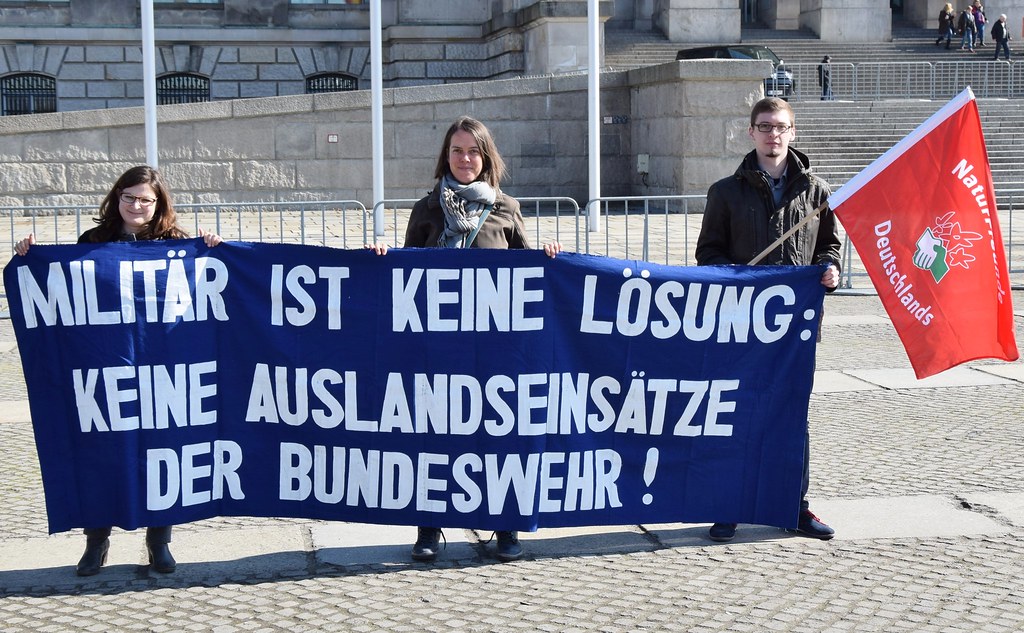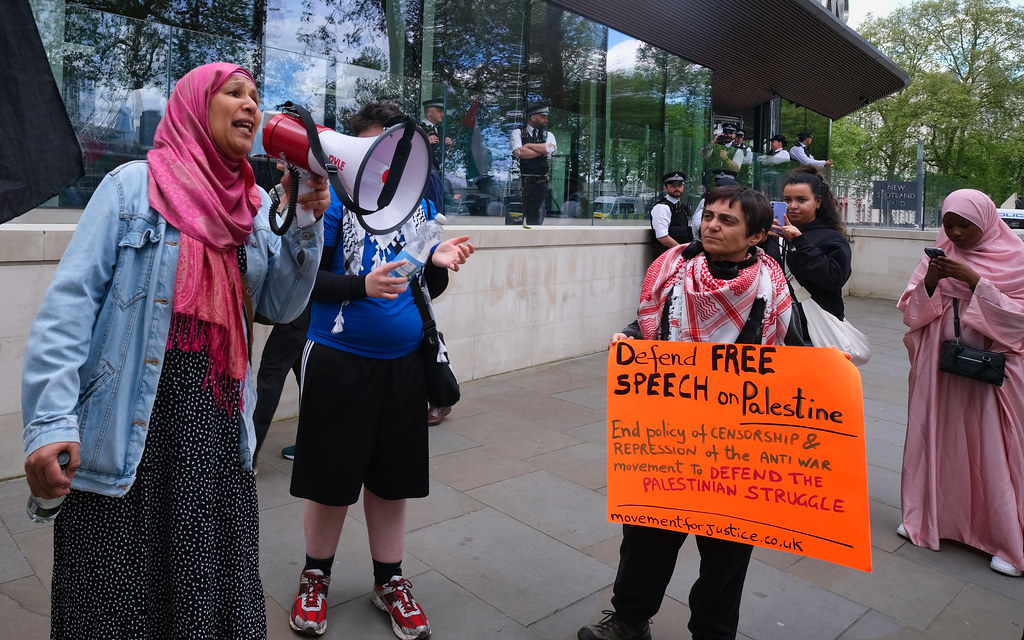Wedding is full of old factory buildings, many of which have been converted into art spaces, such as the Pankehallen or the Gerichtshöfe. But the Pierburg factory on Scheringstraße, right next to Humboldthain park, is an exception. It is an old factory that is now… a factory.
Pierburg makes car parts, but it belongs to the German weapons consortium Rheinmetall. Their stock price has been soaring as the German government commits hundreds of billions of euros to new weapons — and they need new facilities to make demand. Hence, the Wedding workshop is going to be retooled to make munitions.
This isn’t an isolated case. In Görlitz, a factory currently making trams will soon roll tanks off the conveyor belts. According to the Red Cross, weapons factories can be considered as legitimate military targets. Who would want such a thing in a residential neighborhood, next to a public swimming pool? That’s why a demonstration against this will take place on May 10.
But this factory has a history going back to the 1850s, when this area became known as the Red Wedding.
Revolutionary History
The facility on Scheringstraße once belonged to the Berliner Maschinenbau AG (BMAG), founded by Louis Schwartzkopf. While they made all kinds of metal tools, their specialty was torpedos, which they provided to the German navy in two world wars.
However even while they were producing instruments of war, the workers there struggled to stop war. During World War I, Berlin’s munitions workers went on strike again and again. This workforce was particularly militant: they would put down their tools and march to nearby factories to pick up more workers. Of the 33 elected representatives here, 32 were independent socialists or Spartacists.
One of the leading worker-activists was Erich Habersaath, a 25-year-old toolmaker and a leader of Berlin’s socialist youth. When the revolutionary wave reached Berlin on November 9, 1918, Habersaath was marching at the head of a massive demonstration toward the Maikäferkaserne, the old “Beetle Barracks” on Chauseestraße (where the foreign intelligence service BND now has its headquarters). With their red flags, these workers called on the young soldiers to join the uprising.
The Berlin insurrection was largely peaceful. But at this barracks, officers shot into the crowd, killing Habersaath. Eleven days later, he was buried at the Cemetery of the March Fallen in Friedrichshain, where you can still see his grave. In 1951, a street in the East Berlin part of Wedding was named Habersaathstraße. That was in the news recently when a building on that street was occupied by homeless people.
Workers’ Interests
What do workers in this factory think today? I don’t think anyone can say for sure. But the millionaire bureaucrats who run the metalworkers’ union IG Metall have been generally positive about the German state’s rearmament. This kind of military Keynesianism, they say, will guarantee good jobs.
Individual workers have every interest in well-paid, secure jobs — but the working class has no interest in producing elements of destruction. As German cities crumble due to austerity, money is being spent on things to destroy other factories.
Unions need to call for jobs — but also for workers’ control of the factory. The producers themselves, in consultation with working people across the country and the world, should decide what is needed. We need neither car parts nor bullets, but trams, trains, and e-bikes. We need schools, hospitals, and above all affordable housing.
The workers of Scheringstraße have shown, again and again for the last 150 years, that they have the power to not only shut down production of arms, but to radically change society. The demonstration on May 10 should help workers start to recognize this unstoppable power, even if it is currently latent.
Red Flag is a weekly column on Berlin politics that Nathaniel Flakin has been writing since 2020. After moving through different homes, it now appears on Friday at The Left Berlin.




